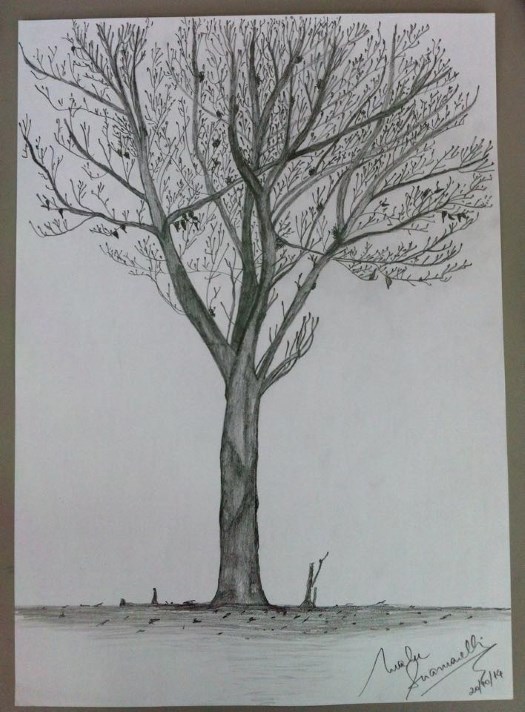Writing Your Drawing: Ideas For a Lesson
Malu Sciamarelli, Brazil
Malu Sciamarelli has been working in Brazil for over 20 years as an English teacher, materials designer, translator and consultant for publishers. Currently, her main interests are writing and using her own short stories and literature in her Creative Writing classes. E-mail: malusciamarelli@gmail.com
Menu
Stage one: Draw what you see
Stage two: Vocabulary chains
Stage three: Mapping a poem
The poem
- Choose a tree, a flower, or another element of nature where you live or nearby.
- Take a moment to observe everything about it.
- Draw it the way you see it using only a pencil.
This is an example of a picture drawn by Malu working alongside her learners and creating a drawing of her own.

- Write down as many words as you can to describe what you drew.
- Then write down words that describe how it makes you feel. What emotions come to mind?
- How does the drawing connect with you and your own life? Your memories, hopes, plans, loved places and people.
The ‘vocabulary chains’ below are ways of building words about what you see and what you feel when drawing the picture.
Write a list of 4 or 5 words about what you see. Choose one word in the chain to start a new set of associated words. Continue until you have 4 or 5 lines of words.
Now start a second ‘chain’ with words about what you feel.
SEEING
Tree – branches, birds, leaves
Birds – nests, wings, beak, worms, birdsong
Branches – buds, leaves, twigs, roots
Roots – spreading, going deeper, becoming firm, safe, solid, grounded
FEELING
Feeling secure, safe, connected, part of a family tree, sheltered
Family tree: blossoming, reaching out, growing, reaching the sky
Growing: ideas, courage, dreams, plans, wisdom
Now use the words to write a poem, clustering the words into short phrases, or turning each line of associated words into the line of a poem.
The Tree
It seems like
she has been there
forever.
Her branches are
as dark as the seas,
only scattered leaves.
Little nests show
her arms gently
cradle birds.
They know her
deep roots will
keep her grounded,
and them sheltered,
but will never stop them
from reaching
for the sky.
Malu Sciamarelli

Please check the Creative Methodology for the Classroom course at Pilgrims website.
Please check the Teaching Multiple Intelligences course at Pilgrims website.


|